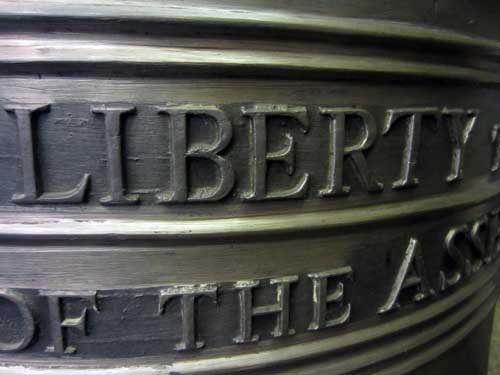
I first started becoming aware of the large bells during a long driving trip in 2015, where I visited the capitol buildings of 10 states. Some bells were inside, others outside, and several I couldn't find at all. I has assumed it was just me, that I hadn't searched hard enough. But apparently the story isn't that simple. For all the bell history you may ever wish to know, I refer you to this wonderful website by Tom Campbell.
But in short, hundreds of full-sized (note, there are also countless other sizes), functional, brass Liberty Bell replicas exist throughout the world today ... and it's still even possible to have new ones made. And they aren't only found at state capitol buildings (actually, quite a few capitols don't even have one. For example, the capitol building of New Mexico is in Santa Fe, but the state's bell sits on the State Fair Grounds in Albuquerque). They can be at museums, college campuses, cemeteries, parks, restaurants, department stores, amusement parks (such as Knott's Berry Farm in California or Disney World in Florida), state fair grounds, ... and apparently even Nazi Germany had one!
Different foundries have been producing replicas since the late 1800s. Whitechapel Bell Foundry in London (which made our original official Liberty Bell in 1752) has made some two dozen more using the same mold. The McShane Bell Foundry in Maryland has cast at least half a dozen, with the oldest dating back to 1897.
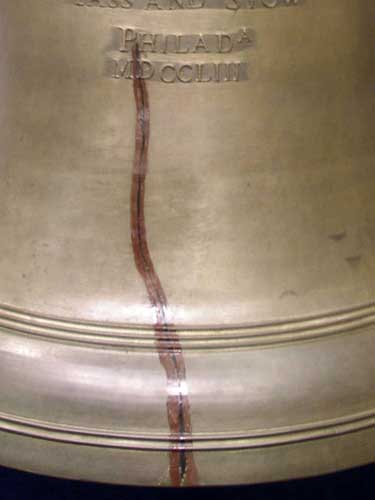
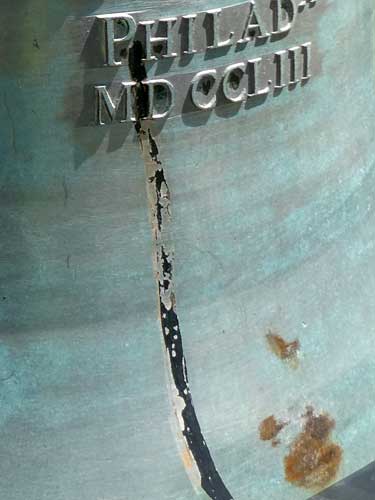
None of the copies have an actual crack. They are all painted or added in some way.
The original bell
PENNSYLVANIA (Philadelphia)
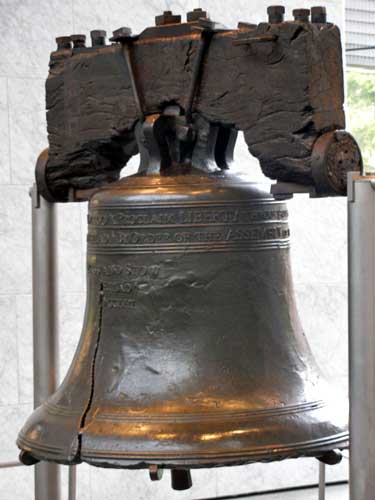
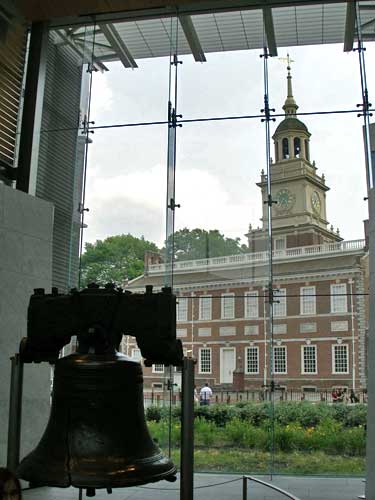
Today the bell is located in the Liberty Bell Center across the street from Independence Hall.
Technically, the famous bell is even a copy of its own self. The first bell was cast by the Whitechapel Bell Foundry in 1752. Known as the "State House Bell", it was hung in the (then new) bell tower of the Pennsylvania State House (now Independence Hall), where the rim cracked upon the first ring. Seeing an opportunity, foundry workers John Pass and John Stow recast the bell in 1753 by using the same metal and adding 150 pounds of copper, making sure their names were on it this time. Unfortunately they weren't bell experts and the bell had an extremely unpleasant tone when rung. They recast it again. The ring still wasn't nice but deemed satisfactory this time.
In the 1830s, it began being called the "Liberty Bell" by abolitionists wanting to outlaw slavery. In 1846, it started to crack again and was repaired. But on the next ringing, it cracked again and hasn't been rung since. All the cracks (even in the very first bell from London) seem to have been due to using low-quality or inappropriate metals, causing the bell to be too brittle. Fortunately it maintained its place as a symbol of freedom.
Material: 70% copper, 20% tin, 10% other metals (lead, zinc, arsenic, nickel, gold and silver)
Size & weight: 3 feet tall, 2080 pounds (just over 1 ton)
Proclaim LIBERTY Throughout all the Land unto all the Inhabitants Thereof Lev. XXV. v X. (Bible verse Leviticus 25:10)
By Order of the ASSEMBLY of the Province of PENSYLVANIA for the State House in PhiladA (Pennsylvania was spelled either way)
Pass and Stow
PhiladA (abbreviation for Philadelphia)
MDCCLIII (1753)
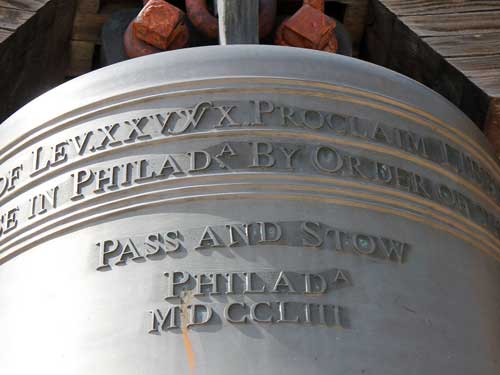
The saving bonds replicas
Perhaps the most famous set of replicas comes from Paccard Foundry in France. In 1950, the U.S. Department of the Treasury ordered 57 Liberty Bell replicas as part of a large push to encourage investments in federal saving bonds. "Save for Your Independence!" The bells toured the country and were then gifted to every state and territory once the bond drive was over. What each state did with its bell was up to it.
ARKANSAS (Little Rock)
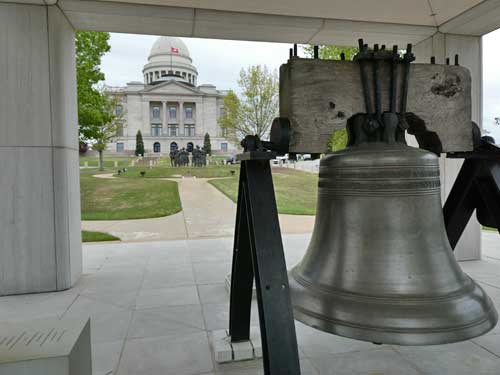
Bell #27 near the capitol building
COLORADO (Denver)
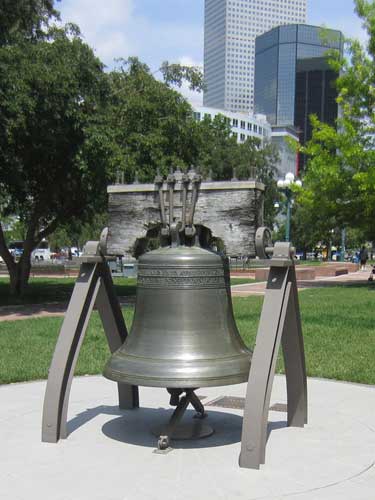

Bell #47 is located in Lincoln Veteran's Memorial Park near the capitol building. Each bell is stamped with its own serial number, but since I didn't know about that at the time, I had never made any specific effort to check.
IDAHO (Boise)
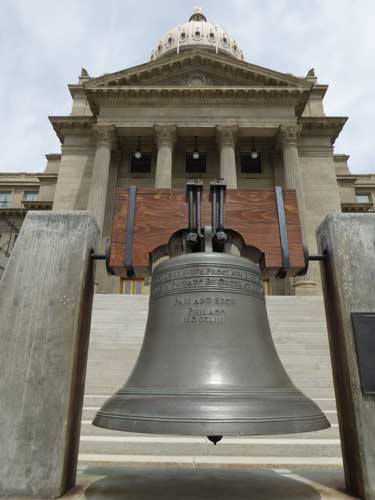
Bell #22 in front of the capitol building
ILLINOIS (Springfield)

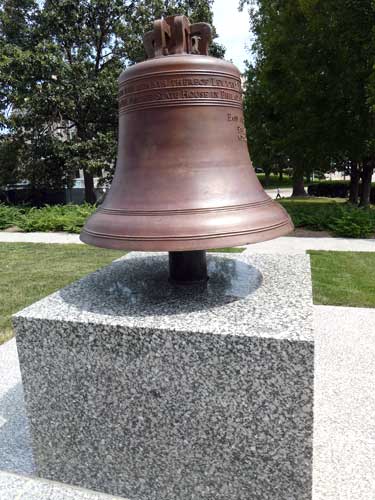
Bell #25 in front of the state capitol
MINNESOTA (St. Paul)
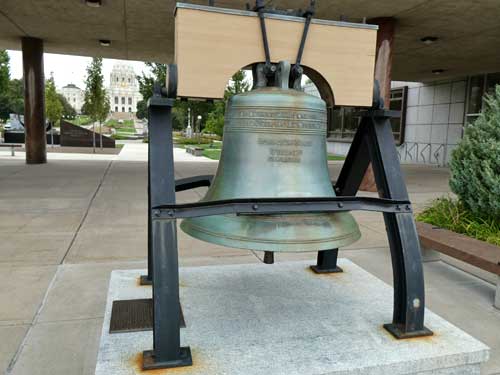
Bell #11 stands a short ways from the capitol building
MISSOURI (Jefferson City)

Bell #20 is located near the capitol building and ...
MISSOURI (Independence)
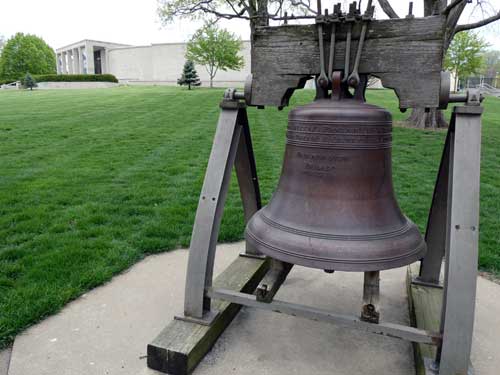
... bell #54 is located outside the Truman Presidential Library and Museum. In addition to the replicas given to each state, one was also given to Independence, the home state of Harry S. Truman, who was president during the 1950 bond drive. The Truman Presidential Library opened in 1957 and the bell arrived two years later as part of a special July 4th celebration.
OHIO (Columbus)

Bell #23 was located indoors.
PENNSYLVANIA (Allentown)
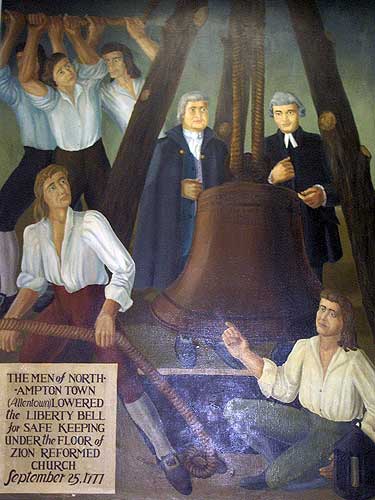
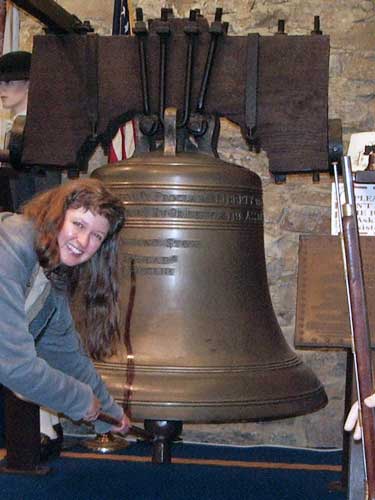
In 1777, during the Revolutionary War, when it looked like the British were going to attack Philadelphia, it was decided that the State House Bell should be hidden. Captured bells were frequently melted down and recast into munitions. The bell was loaded into a wagon and brought to Allentown (then called Northampton Town) where it was hidden under the floor of the Zion Reformed United Church of Christ for nine months. In 1778, after the British no longer occupied Philadelphia, it was returned home where it was placed in storage until 1785. The church houses a museum (which just recently closed in 2023) dedicated to the bell's history. One of the 1950 Savings Bond bells ... bell #4... now resides there. We were even allowed to ring it!
SOUTH DAKOTA (Pierre)
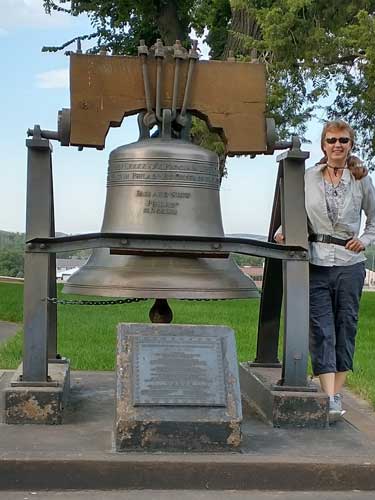
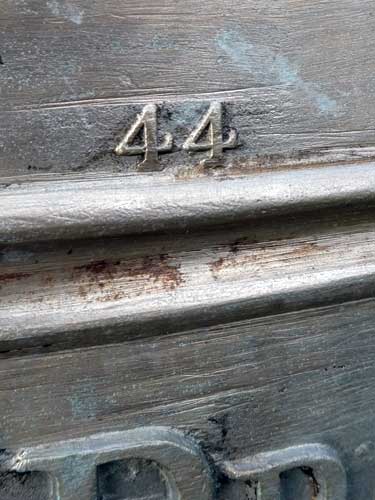
Bell #44 was clearly marked and stood not too far from the capitol building.
TENNESSEE (Nashville)
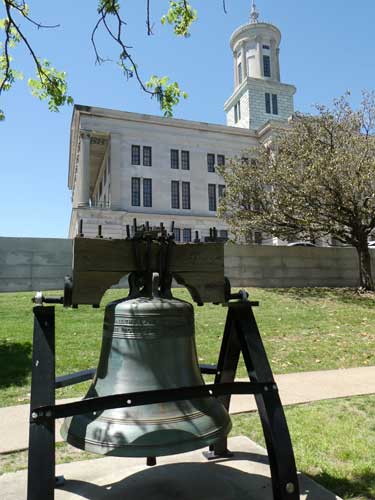
Bell #43 in front of the capitol building
UTAH (Salt Lake City)
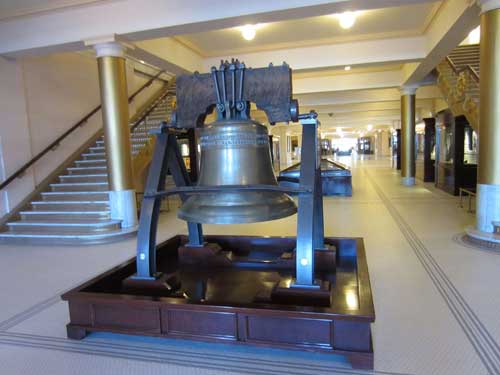
Bell #9, inside the capitol building
WISCONSIN (Madison)
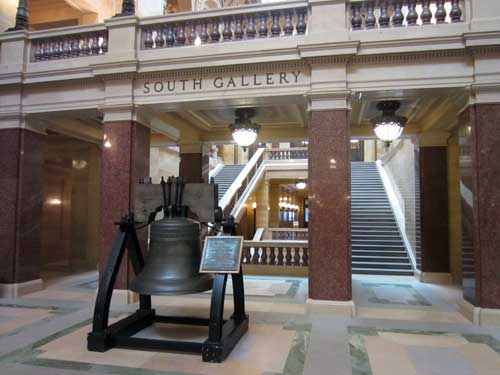
Bell #29, inside the capitol building
WYOMING (Cheyenne)
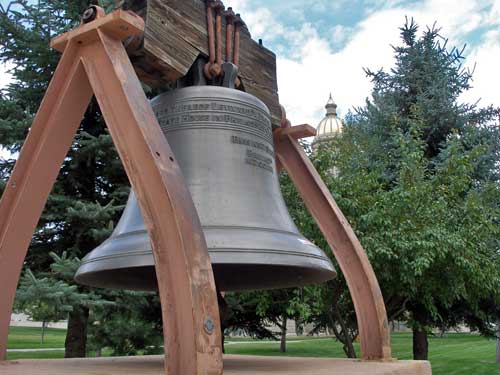
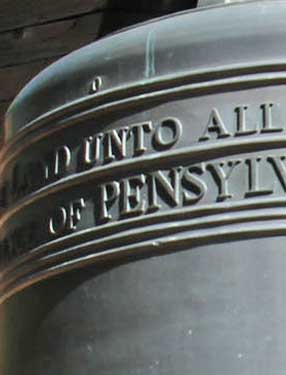
I was fortunate to see bell #0 before it was moved into an offsite storage facility around 2018 for the capitol building's 4-year renovation project. Hopefully it will be on display again someday.
Other bells
KANSAS (Topeka)
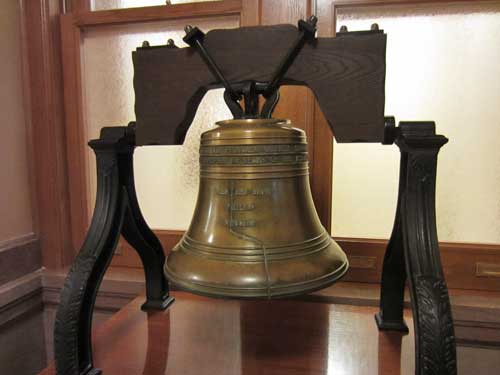
This Liberty Bell replica was a bicentennial gift by the Kansas American Legion and Legion Auxiliary. It is about a 3/8-scale and weighs only 235 pounds. The state's 1950 saving bond replica (#36) is actually stored away in the a room in the basement parking garage. It was moved there in 2003 when the building underwent a 13-year restoration and was not brought back because funds were not available for its repair. This is apparently the fate of several of the bells, including those of Kentucky (taken down in 2022 from the garden of the Kentucky History Museum), Massachusettes, North Dakota, West Virginia and Wyoming.
PENNSYLVANIA (Harrisburg)
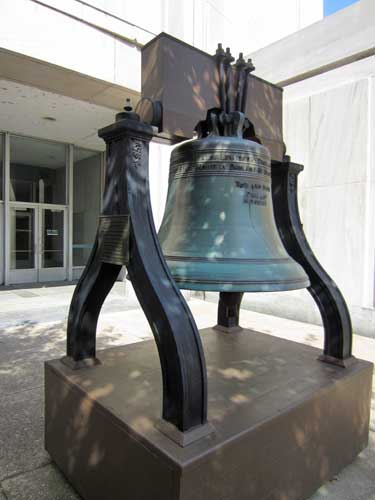
This full-sized, 2,500-pound, bronze replica of the Liberty Bell was specially cast by the Paccard Foundry for the Pennsylvania Exhibit at the New York World's Fair 1965. It was paid for by private (not state) funds raised by Governor William Scranton’s Committee of 100,000 Pennsylvanians for the Production of Economic Growth. During the exhibition, it stood in a modern-looking pavilion while Boy Scouts passed out fact sheets about it and the state, emphasizing the principles of liberty, freedom and democracy. Visitors were allowed to ring the bell.
PENNSYLVANIA (Valley Forge)

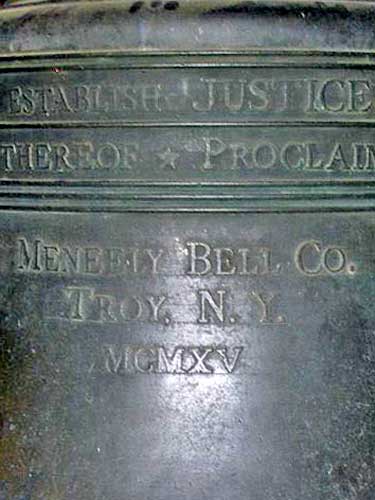
The Justice Bell (or Women's Liberty Bell) can be seen at the Washington Memorial Chapel. It was forged in 1915 by the Meneely Bell Foundry in Troy, NY. The Meneely Bell Company ran from 1808 to 1951 and eventually operated four foundries. While still a replica of the actual Liberty Bell in most ways, it has the added words of "Establish Justice" at the top, as well as the different foundry name and year. It toured the country as a symbol of the Women's Suffrage Movement. In 1920, it came here.
NEW YORK (Albany)
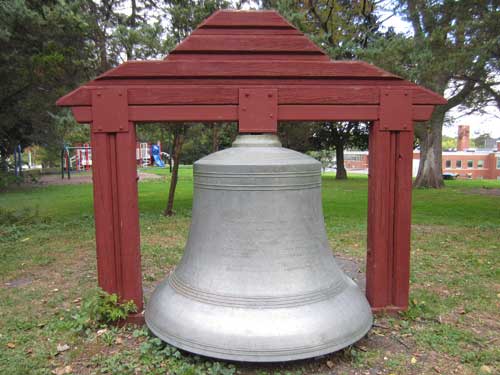
No bell stands in the New York capitol building. Bell #17 can be found in the New York Education Building, and this Meneely Bell (while not a Liberty Bell but still impressive) stands in Lincoln Park. Cast in 1882 by Meneely Foundry (in the nearby town of Troy), the bell weighs over 7,000 pounds and is over 4 feet tall. It was hung in the City Hall tower, but was eventually removed in 1927 when the carillon was installed. By then, there was no more need for a fire bell since a new fire telegraph station had been built in 1917. "Purchased under the supervision of the Albany Board of Fire Commissioners, June 1882"
TENNESSEE (Knoxville)

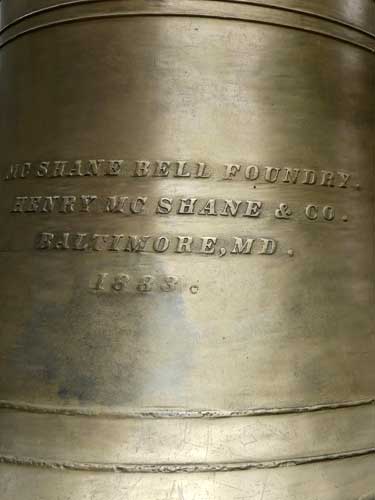
While also not a Liberty Bell copy, it was still a lovely find. The Market House Bell was cast by the McShane Bell Foundry of Maryland in 1883. It weighed over 2,500 pounds and was hung in the bell tower of city hall. Bells were an effective means of community alerts in the days before radios. Using a number-based code, the rings could signal different emergencies, such as fires or riots. In the 1930s, it was moved to the fire station where it was struck with a hammer to signal blackout drills during WWII. It returned here to Market Square in the 1980s.
WASHINGTON DC
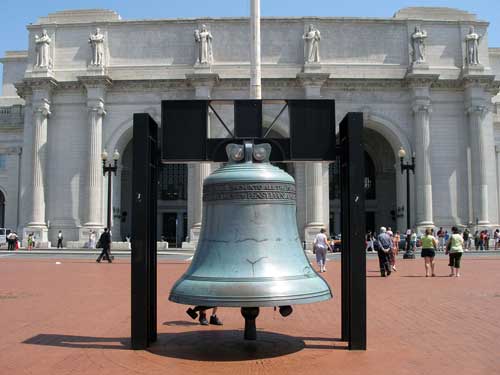
The American Legion Freedom Bell which stands in front of Union Station is not one of the 1950 bell series (that one is apparently in the U.S. Treasury building and can only be seen on a tour). It was cast by Petit & Fritsen in the Netherlands and was a Bicentennial gift to our nation's youth. It is actually much larger in size than the original ... a 2:1 scale replica that weighs over 8 tons and stands almost 7.5 feet tall, but lacks the iconic 24.5 inch long crack. This allows it to ring. It's tuned to the key of F (for Freedom) whereas the original Liberty Bell is E-flat. It first journeyed to all 48 contiguous states aboard the American Freedom Train from 1975 to 1976, sharing a train car with a lunar rover. It eventually found its home here in 1981.
Liberty Bell coin bank
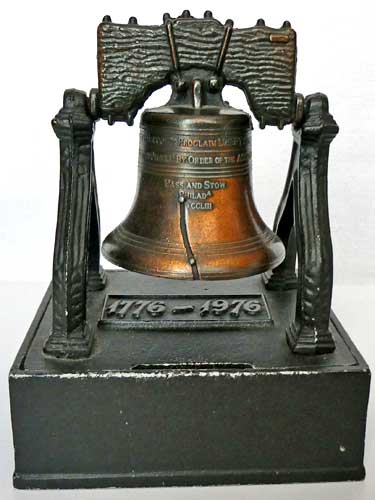
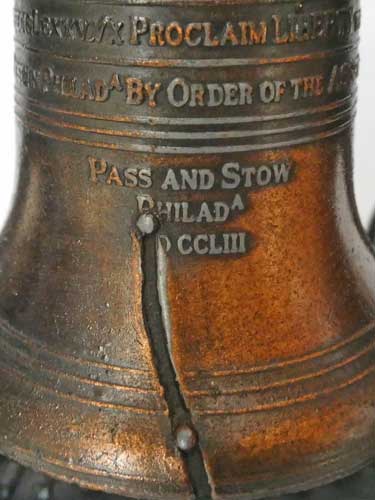
Stading at just over 4.5 inches tall, this bicentennial commemorative coin bank is made of cast iron by the Financial Promotions Co. of Harrisburg, PA. It even swings and the bell rings!

